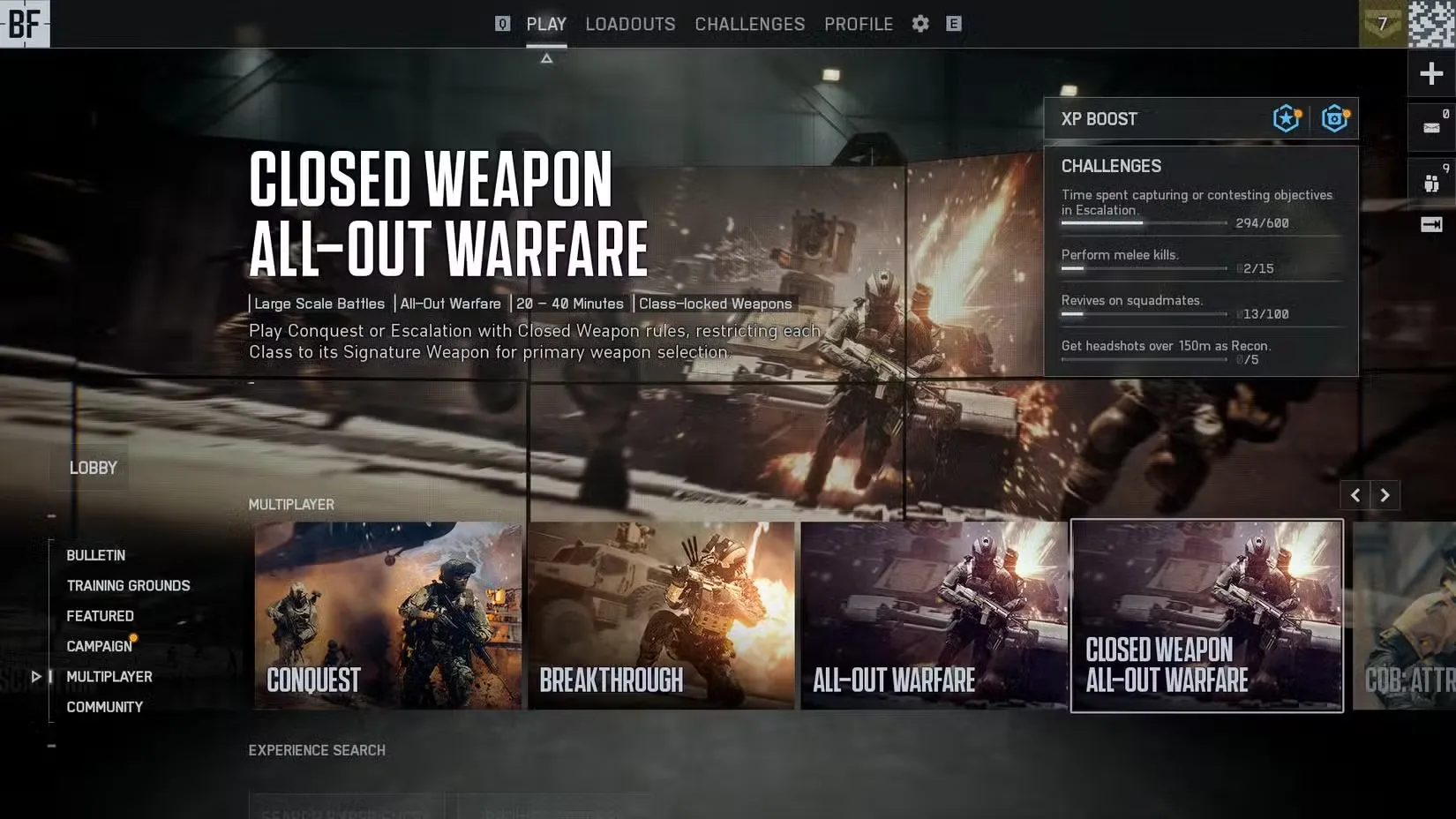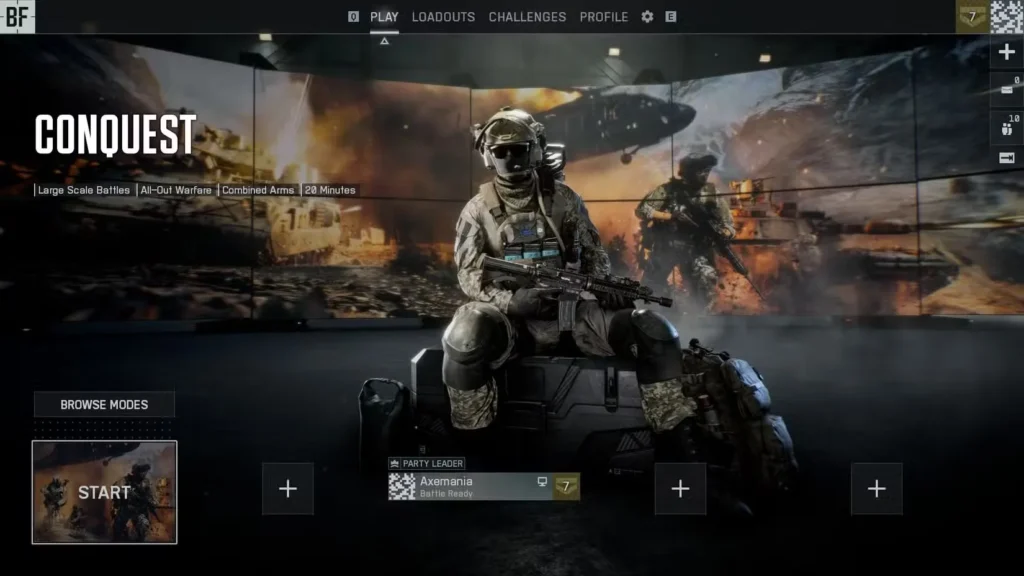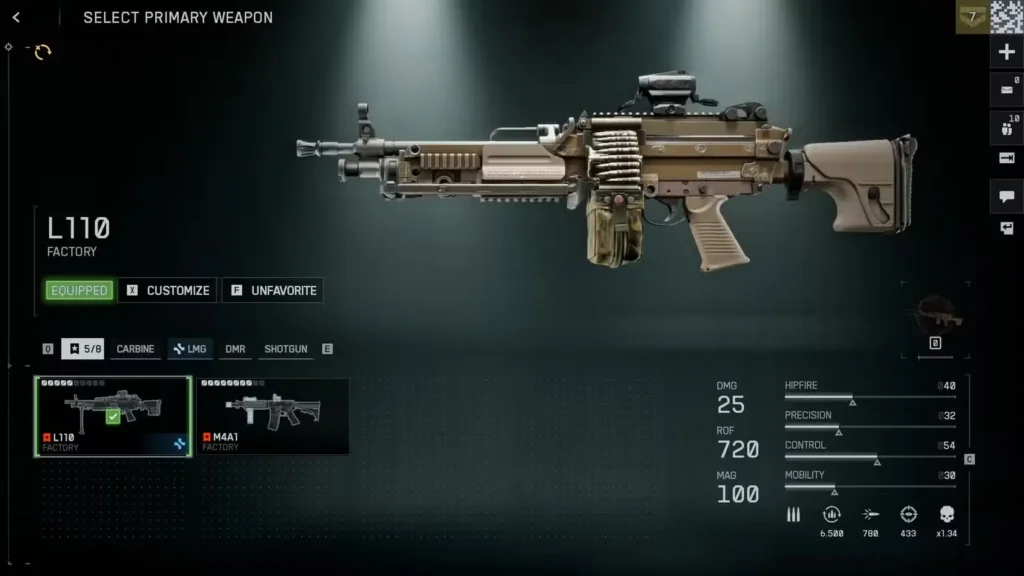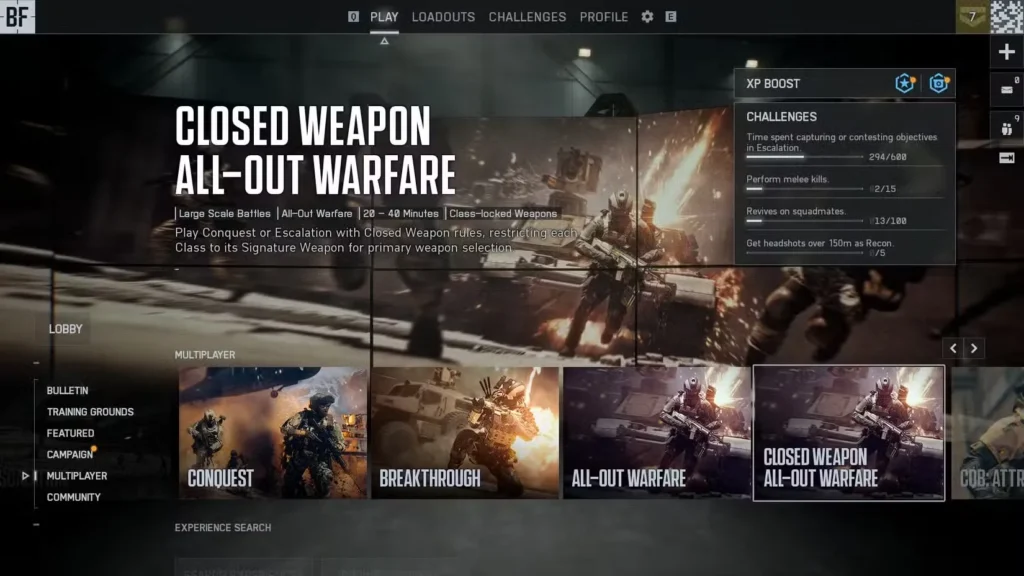
Newsletter Subscribe
Enter your email address below and subscribe to our newsletter

Enter your email address below and subscribe to our newsletter
Your Source for Game News and Guides

Confused about Open vs Closed Weapons playlists in Battlefield 6? We break down both systems, explain the pros and cons, and help
If you’ve scrolled through the Battlefield 6 subreddit lately, you’ve probably seen people passionately arguing about Open versus Closed Weapons playlists. And if you’re new to the series or just picked up Battlefield 6 on Steam, you might be wondering what all the drama is about.
Here’s the deal: Both playlists offer the full Battlefield experience, but they fundamentally change how classes work. One system lets you use any gun with any class (Open), while the other restricts weapons to specific classes like the older games (Closed). Neither is objectively “better,” but one will definitely suit your playstyle more than the other.
Let me break down both options so you can make an informed choice—and maybe understand why people get so heated about this topic.
To understand this debate, you need a bit of history. In classic Battlefield games (think Battlefield 3, 4, and earlier), weapon access was strictly class-based:
This system created clear roles and weaknesses. You knew that sniper over there was vulnerable up close. That LMG-wielding Support player probably wasn’t great at mid-range duels. It was predictable, balanced, and worked for over a decade.
Then Battlefield 2042 threw that out the window with an “Open Weapons” system where anyone could use anything. It was… controversial, to put it mildly. Battlefield 6 brings back traditional classes but gives players a choice between both systems via separate playlists.
Important note: Your progression and XP are identical in both playlists. This is purely about gameplay feel and balance—not about grinding efficiency.
Open Weapons is the modern, flexible approach that DICE introduced in 2042 and refined for Battlefield 6. Here’s how it works and why some players swear by it.

In Open Weapons playlists, every class can use every weapon. Period. Want to be a Support player with a sniper rifle? Go for it. Engineer with an LMG? Sure. Assault with an SMG? Absolutely.
To prevent total chaos, Battlefield 6 introduces Signature Weapons—guns that give your class special bonuses when equipped:
Class-Specific Weapon Bonuses:
So while you can use any weapon, you’re incentivized to stick with your class’s specialty. It’s a compromise between freedom and structure.
Flexibility is king. This is the big one. You’re not locked into a playstyle just because you want to use your class’s gadgets.
Some genuinely creative loadouts become possible:
You’re never stuck in a bad situation. Got surprised by an enemy at close range while sniping? In Closed Weapons, you’re probably dead. In Open Weapons, you might have an SMG as your secondary to clutch that fight.
Easier weapon progression. Want to level up the new assault rifle but also need to play Engineer for your squad? In Open Weapons, you can do both simultaneously. No need to sacrifice gadget utility just to grind weapon challenges.
Class identity gets muddy. Sure, classes still have their gadgets and bonuses, but when everyone can use meta weapons, matches start to feel samey. You’ll see way more of the top-tier guns and less variety overall.
Meta loadouts dominate. Here’s where things get problematic. Some combinations are just… too good:
Weaknesses disappear. Part of Battlefield’s tactical depth came from exploiting class weaknesses. That Recon player at 200 meters? In Closed Weapons, rush them because they’re helpless up close. In Open Weapons? They might have an SMG waiting for you. The counterplay gets less satisfying.
Less readable opponents. In Closed Weapons, you see a sniper rifle and know that player is a Recon with limited close-range options. In Open Weapons, that gun tells you nothing about their capabilities or equipment. The tactical clarity just isn’t there.
Open Weapons is great if you:
Honestly? If you’re coming from modern shooters like Call of Duty or Apex Legends, Open Weapons will feel more natural. It’s less restrictive and more forgiving of mistakes.
Closed Weapons is the “classic” system that Battlefield veterans know and love. It’s more restrictive but arguably more balanced. Here’s what you need to know.

In Closed Weapons playlists, each class gets:
So while you can’t grab any gun you want, you’re not completely locked in either. The universal weapons give you some flexibility without breaking class identity.
This is basically the Battlefield 4 system, which many consider the series’ peak. If you played BF3, BF4, or BF1, this will feel like coming home.
Clear roles and counterplay. This is the big advantage. When you see an LMG, you know that’s a Support player with ammo supplies. When you spot a sniper rifle, you know they’re vulnerable up close. This information lets you make smart tactical decisions.
Better team composition. When classes have defined strengths and weaknesses, squads naturally balance themselves out. You need that Engineer to deal with vehicles, but they’ll struggle in open gunfights. You want that Recon for spotting, but they need protection. It creates organic teamwork.
Weapons feel special. When only Recon can use sniper rifles, landing those long-range shots feels more rewarding. Your weapon is part of your identity, not just a tool you picked for meta reasons.
Less meta abuse. Without access to every weapon, players can’t stack overpowered combinations. That Support player can’t camp with infinite sniper ammo. That Engineer isn’t dominating mid-range duels with an assault rifle while still having rocket launchers.
More readable battlefield. You can assess threats better when classes are visually distinct. Seeing an enemy’s weapon tells you how to engage them, which adds tactical depth to every encounter.
Less flexibility. This is the obvious one. If you want to play Assault class but need to level up an SMG, tough luck—you’ll have to switch to Engineer.
Harder weapon progression. Want to unlock every gun? You’ll need to play every class extensively. If you hate playing Recon but love snipers, you’re in for a rough time grinding those Recon class challenges.
Punishes mistakes harder. Got caught at the wrong range with the wrong gun? In Open Weapons, you might have a backup option. In Closed Weapons, you’re just dead. It’s less forgiving, especially for newer players.
Can feel limiting. If you’re used to modern shooters with full loadout customization, Closed Weapons might feel outdated or restrictive. You’re trading freedom for balance, which isn’t everyone’s cup of tea.
Closed Weapons is ideal if you:
If you’re playing modes like Breakthrough or Rush where clear frontlines and roles matter, Closed Weapons tends to create better matches. The gameplay is more predictable, but in a good way.

After playing both extensively (probably too much, if I’m being honest), here’s my perspective:
For new players: Start with Open Weapons. It’s more forgiving and lets you experiment without constantly switching classes. Once you understand the game’s flow and have tried different playstyles, give Closed Weapons a shot to see if you prefer the structure.
For Battlefield veterans: You probably already know which system you prefer, but I’d encourage you to give Open Weapons a fair chance. Yes, it’s different, but it’s not the disaster that 2042’s system was. The Signature Weapon bonuses actually do a decent job maintaining class identity.
For competitive players: Closed Weapons tends to create more balanced, skill-based matches. Open Weapons has too many gimmicky loadouts that can feel cheap.
For casual/solo players: Open Weapons is honestly more fun when you’re not coordinating with a squad. You can adapt to whatever the match needs without being locked into a role.
Look, I get why this is controversial. Closed Weapons represents Battlefield’s identity—the thing that made the series special for 15+ years. Open Weapons is the modern approach that prioritizes player freedom over rigid structure.
Personally? I lean toward Closed Weapons for serious matches, but I totally see the appeal of Open Weapons for casual play. The fact that DICE included both options instead of forcing one system is the right call. It lets the community decide instead of splitting the player base with another controversial forced change.
Here’s what I actually recommend: Play 10 matches in each playlist and see which one makes you want to keep playing. That’s your answer. Don’t let subreddit arguments decide for you—both systems work, they just create different experiences.
Still on the fence? Here’s the rapid-fire version:
Choose Open Weapons if you want:
Choose Closed Weapons if you want:
Pro tip: You can freely switch between playlists anytime. Your progress carries over completely—same XP, same unlocks, same stats. Try both and see what clicks.
The discourse around this topic gets way too heated sometimes. Yeah, there are valid arguments on both sides, but at the end of the day, Battlefield 6 is about blowing stuff up and having a good time with 63 other players.
Whether you’re grinding Deadeye challenges, working on close quarters combat, or just trying to level up faster, both playlists will get you there. The “better” option is whichever one you enjoy more.
And honestly? The fact that we’re debating this instead of complaining about game-breaking bugs or lack of content means Battlefield 6 is in a pretty good spot. So grab your favorite gun, check out our best tips and tricks, and get out there.
Whether you’re team Open or team Closed, I’ll see you on the battlefield.
Get Battlefield 6: Official Site | PlayStation Store | Epic Games Store
More Challenge Guides: Danger Close | Combat Roll Mastery